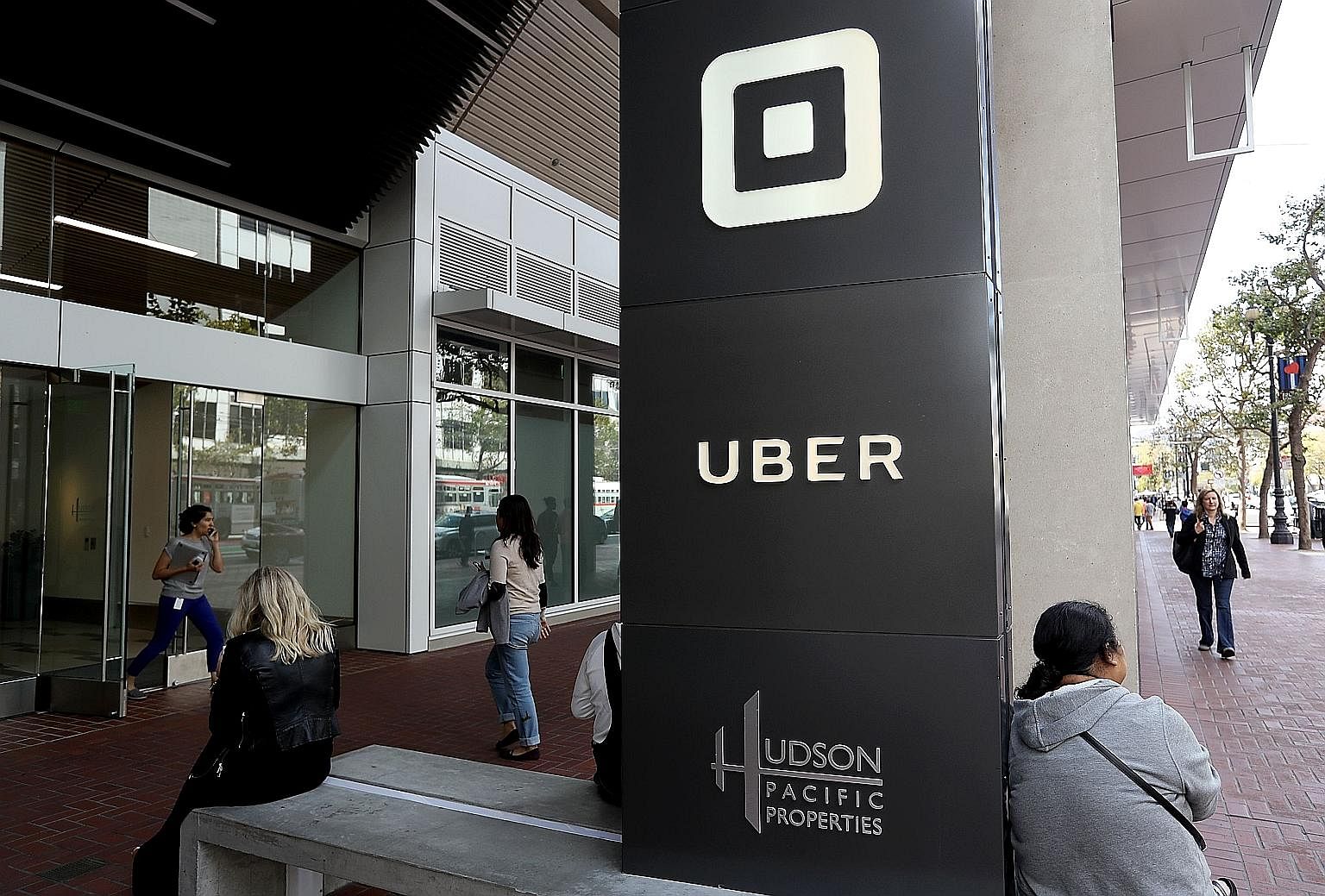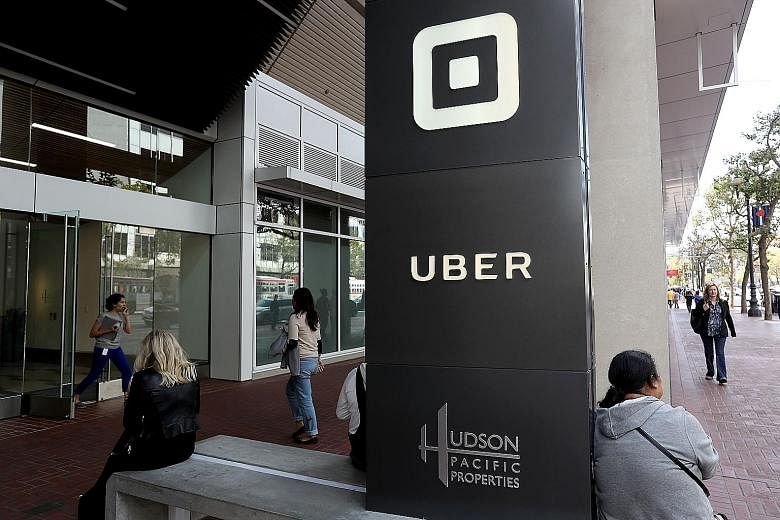For six months now, almost all the news about Uber has been bad. Even before then, the ride-hailing company's combative executive team displayed a remarkable facility for generating negative headlines, but since former Uber engineer Susan Fowler went public in February about seemingly systemic sexual-harassment problems at the company, it's just been one disaster after another.
Ugly lawsuit over allegedly stealing autonomous-car secrets from Google parent Alphabet? Check!
Revelations of a concerted effort to evade regulators around the world? Check!
Embarrassing video of co-founder and chief executive Travis Kalanick rudely berating a driver? Check!
Board member resigning after complaining, during an all-hands employee meeting on combating sexism, that women talk too much? Check!
Even the forced departure of Mr Kalanick in June doesn't seem to have settled things down much, with the company's board struggling to agree on a replacement and Mr Kalanick - who remains a major shareholder - reportedly haunting the search with chatter about "Steve Jobs-ing it" by eventually returning to power.
If you think turmoil like this is bad for the company's business, you're right. Uber's market share in its head-to-head battle in the United States with kinder, gentler rival Lyft fell to 75.3 per cent in June from 78.8 per cent in February and 90 per cent two years ago, USA Today reported last month, based on data from TXN Solutions, a consumer research firm.

However, this does not mean Uber's business is shrinking. The company reported that revenue rose 18 per cent for the first quarter of this year, to US$3.4 billion (S$4.6 billion), and it has told investors that bookings were up more than 10 per cent for the second quarter. Lyft is growing even faster, but Uber's competition with Lyft is not a zero-sum game - at least not yet.
For one thing, both companies are still taking market share from taxis.
Looked at this way, Uber's market share is flat, not falling. Throw in rental cars, and Uber's share of all business-travel spending on ground transportation is still on the rise, increasing to 55 per cent in the second quarter from 53 per cent in the first. That's just among business travellers, but it seems reasonable to extrapolate that a similar dynamic is playing out among non-travellers choosing to leave their cars at home (or dispense with them entirely) and take an Uber or a Lyft instead.
In short, despite shooting itself in the foot again and again and again, Uber continues to hold a pretty commanding share of what is still a growing market. That's partly because of the kind of business it is: a platform that connects customers with providers. Once you've got a critical mass of both signed up, it can be pretty hard to unseat you.
Such two-sided markets existed before the Internet (credit card companies, for example) but, in the online era, they seem to be the default business form.
In a new book, Machine, Platform, Crowd, Professors Andrew McAfee and Erik Brynjolfsson of the Massachusetts Institute of Technology note that online platforms such as Airbnb and Uber "represent the richest combination we've yet seen of the economics of bits and the economics of atoms. As they scale, these platforms handle huge volumes of information - about members and their choices and activities, the availability and pricing of goods and services, payments and problems, and so on. All of this information approaches the ideals of free, perfect and instant. It's very cheap to store, process and transmit, and it's getting cheaper. This means that all relevant and useful information can be everywhere on the platform, all the time. It also means that the demand-side economies of scale - the network effects, in other words - can eventually grow much faster than costs".
That all sounds like good news for Uber. So why is it that the company lost US$708 million in the first quarter?
One theory popular among the most sceptical observers is that the potential market for ride hailing actually isn't all that big, and Uber and Lyft have been continuing to grow only by offering unsustainably low fares.
Eventually, their venture-capital riches will run out, they'll have to stop subsidising fares, and their growth will shift into reverse. There's surely something to this worry - and to concerns that Uber and Lyft will eventually be forced to take on their independent- contractor drivers as employees, or at least spend more on benefits for them.
Focus on these issues too much, however, and you risk missing that Uber and Lyft really do provide a useful service that wasn't being provided nearly as well before they came along.
As analyst Ben Thompson put it in a somewhat-different context in his Stratechery newsletter in April: "The most important reason Uber (and Lyft) has overcome regulatory challenges most of the time is that the company has positive externalities: Not only is the service "good" for passengers (who get a liquid transportation option) and drivers (who get a job), it benefits people who don't use the service. There are fewer drunk drivers and fewer parked cars, restaurants and bars get more business, under-served neighbourhoods become accessible, travellers have better experiences, etc."
Another worry is that the switching costs between Uber and Lyft are quite low: Once customers have installed both apps on their phones, it's no hassle at all to toggle between them for the best service or the best deal.
For drivers, it's more complicated, but there are now apps that can manage the process. If switching is easy, it follows that profit margins will always be under pressure.
On the other hand, getting to the point where it can offer a plausible switching option to Uber across much of the US has cost Lyft hundreds of millions of dollars. That's a pretty significant barrier to entry.
So Uber and Lyft provide a service that is worth something. Some company (or maybe more than one) should eventually be able to turn a profit by providing it. Despite all its recent troubles, Uber still seems to have the best shot at becoming that company.
Of course, Mr Kalanick talked investors into giving Uber a US$69 billion valuation based on a wildly ambitious vision that included a presence in every major market around the world, brand extensions such as UberEats (a meal-delivery service) and Uber's very own self-driving cars.
The company has ratcheted back those global ambitions over the past year by getting out of China and Russia, and there's probably more retrenchment to come. I don't think Uber is in a death spiral. I do think some of its investors will be sorely disappointed.
BLOOMBERG VIEW
•Justin Fox is a Bloomberg View columnist. He was the editorial director of Harvard Business Review and wrote for Time, Fortune and American Banker. He is the author of The Myth Of The Rational Market.

